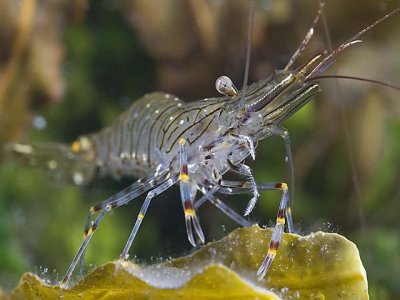Shrimp diseases - Cramped Tail Condition

This occasionally observed condition of penaeid shrimp has been reported to occur in the summer months when both air and water temperatures are high.
Penaeids with cramped tails (while still alive) have a dorsal flexure of the abdomen that cannot be straightened.
This condition typically follows handling, although shrimp have been observed with cramped tails in undisturbed ponds.
The cause of cramped-tail condition is unknown, but its occurrence only during the summer suggests that elevated water and air temperatures, the handling of shrimp in air that is warmer than the culture-system’s water and other stresses may contribute to the cause of the condition. This condition is usually not noticed until the grow-out phase.
Related news
 Understanding shrimp hemocytes Part 2
Understanding shrimp hemocytes Part 2 Shrimp producers seeking to improve the profitability of their crops must be aware of external factors that may affect the survival and growth of their shrimp
 Shrimp diseases - Fungal diseases
Shrimp diseases - Fungal diseases The common disease causing fungi are Lagenidium, Siropodium, Haliphthoros and Fusarium. Environmental factors such as rainy season, humid condition
 Mineral extract reduces EMS, WSSV impacts in Pacific white shrimp
Mineral extract reduces EMS, WSSV impacts in Pacific white shrimp Some antimicrobial compounds appear to disrupt bacterial communication that activates genes associated with release of toxins